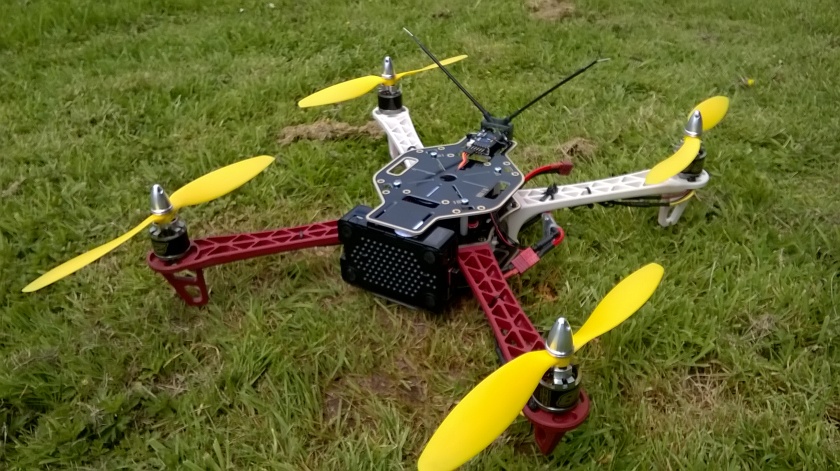
Groundhog UAV curved line following


In this short blog series I’m outlining the hardware and software of The Groundhog, my entry into the recent MAAXX-Europe autonomous drone competition held at the University of the West of England, Bristol.
Connecting the Raspberry Pi 3 to the Pixhawk took quite some working out, so I am hoping that by publishing my own step by step checklist, it may help others save a little time. Continue reading “Post 4. MAAXX Europe. Connecting the Pi 3 to the Pixhawk”

Project Recap:
My Masters project within the Bristol Robotics Laboratory is to design a system of UAVs that can be deployed in groups to co-operatively map the structure of their environment. This is envisaged as an internal environment, however it is expected that the technologies developed may be additionally adapted for external mapping. This series of posts documents key elements of the project. So far we have set the objectives and built an airframe based on a standard 450 quadcopter configuration.
Post Objective:
An on-board Raspberry Pi will have overall control of the UAV. This post shows how we can set up communications between the Raspberry Pi 2 and a Pixhawk flight management unit, using the Mavlink messaging protocol, so that the Raspberry Pi can take control of navigation.

Project Recap:
My Masters project within the Bristol Robotics Laboratory is to design a system of UAVs that can be deployed in groups to co-operatively map the structure of their environment. This is envisaged as an internal environment, however it is expected that the technologies developed may be additionally adapted for external mapping. This series of posts documents key elements of the project.
Post Objective:
This post shows the construction of the new airframe being used for development.
Continue reading “02. MRes in UAV Co-operative Mapping. Airframe Construction.”

Research A major part of my Masters by Research at the Bristol Robotics Laboratory is the research project itself. I am developing unmanned aerial vehicles (UAVs) with the following capabilities:
Continue reading “01. MRes in UAV Co-operative Mapping. Objectives.”

Introduction
A potential issue for electric vehicles and robotics in general is that they move relatively silently. This can pose safety issues when the vehicle/robot is in close proximity with people.
As an aside to my main UAV research project, the synthesiser explores how sounds can be created that relate to the movement of an electric vehicle or robot.
Introduction
This builds on Project 006a, in which we simply connected a GPS unit to our Microview and checked we were getting some data. Now to make some sense of that data and display it!
This is a bit of a step-up in terms of code, which is why I have left an intermediate Project 006b available in case I need to retrace. I’m sure people will let me know..
Introduction
The MicroView has a dial-type gauge that can be implemented in two styles – larger and smaller. This project is an adaptation of Project 003 which also used a potentiometer to demonstrate the MicroView sliders.
Introduction
It’s possible to draw multiple components of different kinds on the MicroView screen at once.
In this blog, the three inputs to an RGB LED are controlled using pulse width modulation (PWM) signals. The three sliders are set up with simple labels ‘R’, ‘G’ or ‘B’ to the left. Each colour is raised to full brightness, then dimmed in sequence. The sliders show this graphically and display the current PWM value from 0-256 in real time.
Circuit
Pins referenced in code as 3, 5 and 6 (numerical pins 12 to 14) are capable of PWM on the MicroView. These are connected to the LED via 330 ohm resistors in the usual way, with the COMMON of the LED connected to pin 8 (GND).
Continue reading “MicroView sliders with text labels using RGB LED”